| |
|
|
||
| |
|
|
||
| |
| Polka |
Polka in Iowa Today
Polka and Community Text by Riki Saltzman with assistance from Rick March, Dave Franklin Kralek, Becky Livermore, Ron Hrubes. Photos by Riki Saltzman, Lori Runkle, and courtesy of Ron Hrubes and Becky and the Ivanhoe Dutchmen. Historic Photos courtesy of Ron Hrubes. Audio provided by Iowa Polka bands.
|
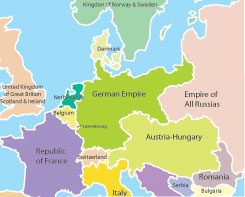
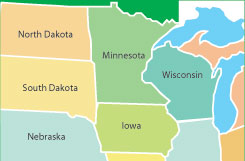
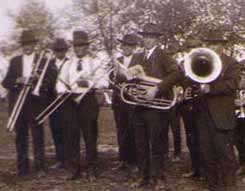
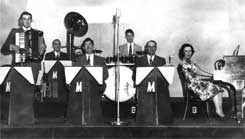
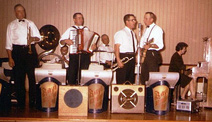 The exuberant style of vocalist and concertina player "Whoopee John" Wilfahrt of New Ulm, MN introduced the polka to the regional and then the national scene in early twentieth century. Whoopee John, whose name derived from his whoops and hollers (Ach Da!), started out playing in a
The exuberant style of vocalist and concertina player "Whoopee John" Wilfahrt of New Ulm, MN introduced the polka to the regional and then the national scene in early twentieth century. Whoopee John, whose name derived from his whoops and hollers (Ach Da!), started out playing in a 
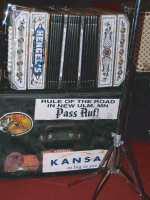

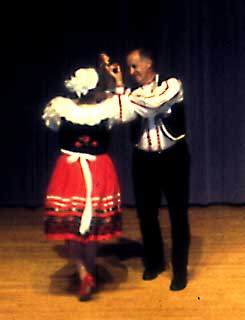
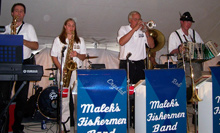
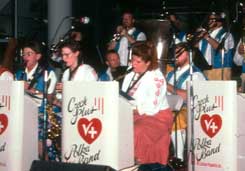
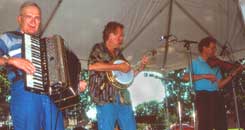
 Becky and the Ivanhoe Dutchmen perform Czech and German polkas at dances
and festivals across the Midwest. Featured at the Smithsonian's 1996
Festival of American Folklife and at the Sesquicentennial and 2001
Festivals of Iowa Folklife, the group includes from three to five
members. Led by Becky Livermore and husband, Terry Ard, the Ivanhoe
Dutchmen consists of accordion and vocals (Becky), drums, tuba and one
or more horn players. "Barefoot" Becky, who grew up in Mt. Vernon, took
her first accordion lesson at age ten Esther Zvacek. When she was 12,
she had her first job with Ed Ulch and the Jolly Bohemians from Solon,
IA. By the time she was 18, she started her own band with Terry Ard and
other area musicians, which tours up and down the I-35 corridor and beyond.
Becky and the Ivanhoe Dutchmen perform Czech and German polkas at dances
and festivals across the Midwest. Featured at the Smithsonian's 1996
Festival of American Folklife and at the Sesquicentennial and 2001
Festivals of Iowa Folklife, the group includes from three to five
members. Led by Becky Livermore and husband, Terry Ard, the Ivanhoe
Dutchmen consists of accordion and vocals (Becky), drums, tuba and one
or more horn players. "Barefoot" Becky, who grew up in Mt. Vernon, took
her first accordion lesson at age ten Esther Zvacek. When she was 12,
she had her first job with Ed Ulch and the Jolly Bohemians from Solon,
IA. By the time she was 18, she started her own band with Terry Ard and
other area musicians, which tours up and down the I-35 corridor and beyond. 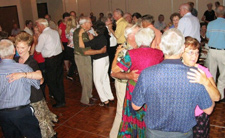 Polka music and dance are, above all, about community. Polka dance clubs also make sure that their members know where and when bands will be playing. Polka Fests such as one in Harlan, home of the Jolly Homebrewers Polka Band in southwest Iowa; the Humboldt Polka Festival; Oktoberfests throughout the state; and the new Beckster Fest in the Amana Colonies are popular among new and old polka aficionados throughout the state.
Polka music and dance are, above all, about community. Polka dance clubs also make sure that their members know where and when bands will be playing. Polka Fests such as one in Harlan, home of the Jolly Homebrewers Polka Band in southwest Iowa; the Humboldt Polka Festival; Oktoberfests throughout the state; and the new Beckster Fest in the Amana Colonies are popular among new and old polka aficionados throughout the state.